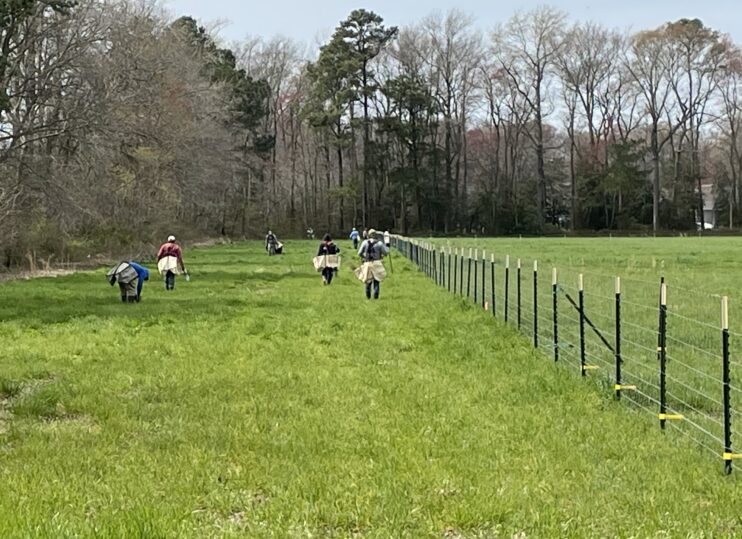Location: Sussex County (Inland Bays Watershed)
Type of buffer: Agricultural
Partners Involved: The State of Delaware through DNREC and the USDA Commodity Credit Corporation – through Farm Service Agency (FSA) and the National Resource Conservation Service (NRCS)
Submitted by: Phil Miller,

The Delaware Department of Natural Resources and Environmental Control (DNREC) is part of a state and federal partnership with the U.S. Department of Agriculture (USDA), that aims to add up to 10,000 acres of Delaware agricultural land to the voluntary Conservation Reserve Enhancement Program (CREP). CREP is a federal and state funded program and is part of the USDA’s Conservation Reserve Program (CRP).
Through Delaware’s CREP, representatives work with agricultural producers to reserve land normally used for agronomic production to implement certain conservation Best Management Practices (BMPs) to enhance water quality and wildlife habitat. These practices are chosen to meet high-priority conservation goals identified by the state. In return, CREP participants sign a 10 – 15 year contract and receive federal and state funds. The federal funding is managed by the Farm Service Agency (FSA)and the state funding is managed through the DNREC. Sometimes, funding and/or other technical resources are leveraged through other partner organizations. CREP funding sources may come in the form of rental payments, practice incentive payments, signing incentives payment, and installation cost-share.
In Delaware, this program is designed to help reduce nonpoint source pollution including sediment and nutrient runoff contributing to the Chesapeake Bay, Delaware Bay, and Inland Bays watersheds. Programs like CREP are essential for improving local water quality, reducing soil erosion, increasing wildlife habitat, and restoring wetlands. The CREP program aims to establish conservation buffers on 1,200 miles of state waterways and drainage systems, and restoring natural conditions for water temperature and dissolved oxygen in areas protected by riparian buffers.
Through CREP in Sussex County, a participant’s contract began on October 1, 2023. Planning began to install a new riparian forested buffer on environmentally sensitive agricultural land. In the spring of 2024, through the help of the Delaware State Forest Service, a little over one (1) acre of a riparian forested buffer was planted along a stormwater ditch between two private landowner properties. The planting included trees such as Black Walnuts, Redbuds, Sweet Crabapple, and various native Oaks. In addition to the funding resources utilized for the installation of the BMP, the landowner has expressed their appreciation of the associated conservation benefits.
According to the Chesapeake Bay Program, “riparian forest buffers are one of the most important restoration practices for the Bay, particularly in agricultural areas. Annually, one acre of forest buffer can remove up to 100 lbs. (69%) of total nitrogen, 8 lbs. (60%) of phosphorus, and 2,483 lbs. (71%) of suspended sediment in an average agricultural setting.”
Installing riparian buffers is just one of many practices eligible for CREP. Other practices include planting hardwood trees, restoring wetlands, creating permanent wildlife habitat or shallow water areas for wildlife, and planting filter strips. Additional information on the CREP can be found at https://dnrec.delaware.gov/watershed-stewardship/nps/crep/
This post Is part of the fourth annual CCLC Riparian Buffer Month.
For more information check out our page


